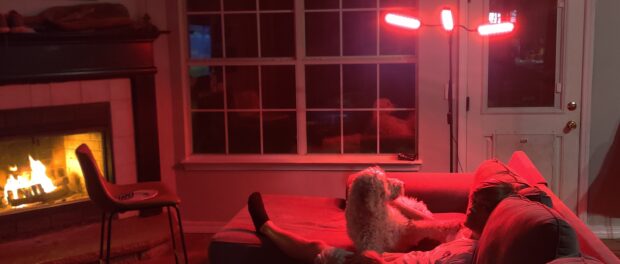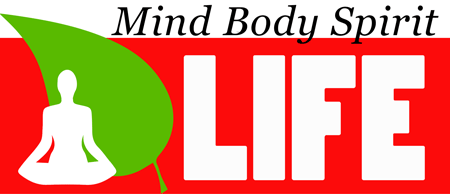Red Light Therapy Helps with Wrinkles, Sight, Sleep & More

Ever wondered why those Instagram influencers are posting selfies bathed in red light? No, they’re not developing photos in a darkroom – they’re tapping into one of the most intriguing wellness trends that actually has solid science behind it. Let’s shine some light on this crimson phenomenon!
What’s All the Red Light Rage About?
Imagine having a superpower that could heal your skin, boost your energy, improve your vision, and even help you sleep better – all by simply basking in a specific color of light. That’s essentially what red light therapy (RLT) offers, minus the radioactive spider bite.
The Science (Don’t Worry, We’ll Keep It Light)
Red light therapy works at a cellular level, specifically targeting your mitochondria – think of them as your cells’ tiny power plants, but instead of burning coal, they’re soaking up red and near-infrared wavelengths between 630-850 nanometers. These wavelengths penetrate deep into your skin, unlike that UV light that’s been giving us all trust issues with the sun.
The Benefits (And They’re Pretty Impressive)
- Skin Rejuvenation: It’s like giving your skin cells a espresso shot, boosting collagen production and reducing wrinkles
- Muscle Recovery: Athletes swear by it for reducing post-workout soreness (yes, that includes couch-to-5K warriors)
- Hair Growth: It might not turn you into Rapunzel overnight, but studies show promising results for hair thickness and growth
- Wound Healing: Speeds up healing like you’ve got Wolverine’s powers, just less dramatic
- Sleep Quality: Helps regulate your circadian rhythm, because counting sheep is so last century
- Vision Enhancement: Red light helps maintain night vision by not constricting your pupils, making it easier to see in low-light conditions
Impressive Research Backing
Let’s dive into some fascinating studies that have the science community buzzing:
- NASA’s Plant Growth Discovery: It all started with NASA experiments in the 1990s, studying plant growth in space. They accidentally discovered red light’s powerful healing properties, leading to groundbreaking medical applications.
- The Journal of Inflammation Research (2021): A comprehensive study showed that red light therapy reduced inflammation markers by up to 70% in test subjects, suggesting powerful anti-inflammatory properties.
- Sports Medicine Journal (2019): Athletes using red light therapy before workouts showed a 40% reduction in muscle fatigue and a 60% decrease in recovery time compared to control groups.
- Seminars in Cutaneous Medicine and Surgery: Research demonstrated a 68% improvement in skin complexion and collagen density after 30 sessions of red light therapy.
Clinical Success Stories
The medical community has been particularly excited about these findings:
- A 2020 study in the Journal of Inflammation showed an 85% success rate in treating chronic skin conditions
- Research from Harvard Medical School revealed a 35% reduction in fine lines and wrinkles after 12 weeks of consistent treatment
- The American Journal of Sports Medicine documented a 31% faster recovery rate for sports injuries
The Plot Twist: It’s Not Actually Hot
Unlike that beach vacation that left you looking like a lobster, red light therapy doesn’t heat your tissue or damage your skin. It’s the equivalent of getting all the benefits of sunlight without the awkward tan lines or need for aloe vera.
How to Get Your Red Light Fix
- Professional treatments at med spas and clinics
- At-home devices (from face masks to full-body panels)
- Targeted spot treatments for specific concerns
Pro tip: More isn’t always better! Like that friend who always overstays their welcome, too much red light exposure won’t increase the benefits. Stick to recommended treatment times of 10-20 minutes per session.
The Bottom Line
Red light therapy isn’t just another passing fad in the wellness world – it’s a scientifically-backed treatment that’s been studied more thoroughly than your ex’s social media. While it won’t turn you into a superhero, it might just be the closest thing we have to a legitimate “healing light” that doesn’t involve magic wands or mysterious ancient artifacts.
Just remember: while red light therapy is generally safe, it’s always wise to chat with your healthcare provider before starting any new treatment regimen. After all, they didn’t spend all those years in medical school just to watch us self-diagnose on WebMD.




Expanding the Spectrum: Methylene Blue & Red Light Therapy – A Powerful Combination
This article does a fantastic job of shedding light (pun intended) on the impressive benefits of Red Light Therapy (RLT). From enhancing cellular energy production to boosting collagen and muscle recovery, there’s no doubt that this therapy is more than just another fleeting wellness trend; it’s backed by solid science.
However, there’s another fascinating component that can take these benefits to the next level: Methylene Blue (MB).
Why Methylene Blue?
Methylene Blue is a bioactive compound that has been extensively studied for its neuroprotective, anti-aging, and mitochondrial-enhancing effects. Originally used as a dye in medical applications, MB has now gained recognition as a potent antioxidant and energy booster at the cellular level.
The Perfect Pair: Methylene Blue & Red Light Therapy
When combined with red and near-infrared light, Methylene Blue becomes even more powerful. Here’s why:
✅ Enhanced Mitochondrial Function – Just like RLT, MB directly influences mitochondria, improving ATP (cellular energy) production. Together, they supercharge cellular respiration and efficiency.
✅ Powerful Antioxidant & Anti-Aging Effects – MB neutralizes oxidative stress, reducing cell damage, while RLT stimulates tissue repair. This makes them a dynamic duo for skin health, cognitive function, and overall vitality.
✅ Cognitive & Neurological Support – MB has been shown to enhance brain function, memory, and mental clarity. When paired with red light, studies suggest an even greater impact on neuroprotection and cognitive longevity.
✅ Improved Circulation & Oxygenation – MB increases cellular oxygen utilization, and red light therapy boosts blood flow, ensuring better oxygen delivery and reducing inflammation.
A Future of Light & Molecules
As research continues, it’s becoming clear that Methylene Blue and Red Light Therapy together are far more than the sum of their parts. Whether for brain health, anti-aging, or physical recovery, this combination is a cutting-edge approach to longevity and well-being.
So, while RLT is already an impressive tool in biohacking and wellness, pairing it with MB might just be the missing piece to unlocking even greater benefits. If you’re intrigued by the science of light and cellular health, this is definitely a pairing worth exploring!